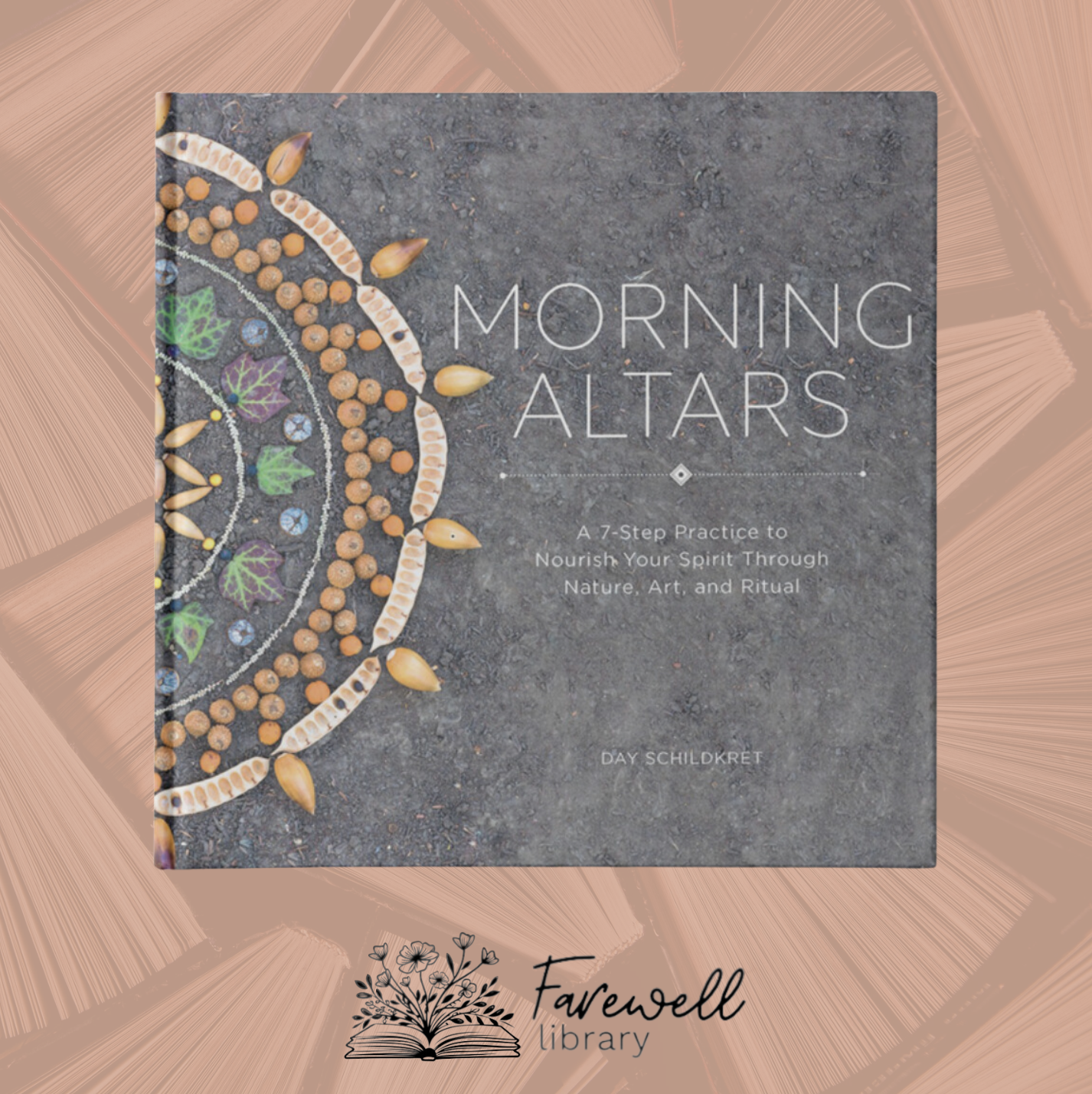Morning Altars by Day Schildkret
Author Day Schildkret wears many hats: impermanent earth artist, teacher, speaker, and student of loss. His personal relationship with grief evolved into a daily ritual of building impermanent altars out of gifts he collected from the universe on his intentional wanderings. This practice of spiritual nutrition developed into “Morning Altars: a 7-Step Practice to Nurture Your Spirit Through Nature, Art, and Ritual” and he now offers seven steps for readers to honor their own grief journey with these ancient, intuitive, and sacred rituals.
Written by Jade Adgate
Ritual seems to be forgotten in our modern world, or at least relegated to the things we do on holidays or as part of our religious traditions. But before our collective memory lapse, ritual provided order to the days we wished to mark, served as a bridge from where we’ve been to where we’ll go, and brought a sense of reverence to our unavoidable transitions. And yet, when you ask a modern human which rituals they partake in, we scratch our heads and consider these habits that we’ve slipped into: morning coffee, daily email checks, evening run, nighttime teeth brushing. So how do we reignite our relationship with sacred ritual as a tool to guide us from one shore of loss to another? Or better yet, from one shore of life to another?
“What began as a way to be with my own heartache transformed into a faithful and creative resource and daily practice that made my life more meaningful. The altars weren’t just about grief. Over time, I made Morning Altars for every life event ... this practice was weaving me and the place I called home into a deeply purposeful and generative relationship ... the altars bound my heart, hands, and home more closely together.”
Schildkret’s 2018 book Morning Altars serves as a guidebook to those of us looking to foster a similar connection between our selves, our transitions, and our habitats. In seven steps which he refers to as “movements”, Schildkret invites readers to cultivate their own practices. Each chapter centers on one of these movements (wander & wonder, place, clear, create, gift, share, let go) and addresses how Schildkret came to cultivate this step, potential roadblocks, specific exercises, and his reflections gathered in the twenty plus years of practicing these steps himself. To illustrate each movement, pieces of Schildkret’s acclaimed earth art in the form of Morning Altars is shared throughout, serving as a useful tool for comprehension and inspiration.
These seven steps can parallel most sacred offerings and I found Schildkret’s philosophy to be apt for deathwork as much as it is for altar building. With gentle considerations of curiosity, wonder, approach, being a guest, playing, gifts, impermanence, and more, we are poised to consider our own relationship with far more than place and grief but that which undergirds them, our relationship with ourselves, what gives us life and how to pivot towards the sacred - prime considerations for those journeying to life’s end.
This beautiful book is a recommended read for every doula’s library, an inspiration point to cultivate a personal ritual practice and to guide families as they similarly develop their own. It is also a book of pure beauty that could be easily offered for coffee table viewing, as a gift for the bereaved, or as a thoughtful complement to any community caregiving group that seeks to find ways to connect to one another and the land we live on.
Recently I attended an event at my local green burial ground and the funeral director pointed me toward an elaborate piece of art made from collected bits of earth. “Our families made this,” he shared reverently as he pushed the sand with his finger, “they each add to it when they bury someone they love with us.” As the room shifted from afternoon to dusk and I circled that earth art altar table time and again the beauty and the poignant intent of this offering kept nestling deeper into my heart. When we bury our dead, we leave a part of them, their body at least, behind. This loss often feels huge, especially if the beloved is our constant companion in life or we didn’t have as long as we needed to fully process the inevitability of that separation. The power of a family coming into the funeral planning space and practicing this ritual of leaving something behind in this larger tapestry to loss and grief and beauty is a powerful way for a community to practice marking loss. This book offers a well-worn path to cultivating this same practice on our own.
For years now I’ve intuitively done something similar to Schildkret. When a client or loved one died, I go for a long wander and keep an eye out for one piece of earth that reminds me of the person who has now left the Earth. Once I find the marker, usually a rock, I put it in my pocket and think of them as I make my way home, rubbing the rock and singing all my prayers of mourning and of praise for the life that has ended. When I get home, I write the person’s name on the rock and add it to a little altar I keep. As my pile has grown, I’ve often wondered what to do with all these little rocks. Many still feel as if they should be with me, reminders of important lessons learned and memories needed but others feel ready to be let go. Perhaps, using the seven movements of Morning Altars, I can offer a piece of earth art for each of these rocks (and the lives and memories attached) as I return them back to the land itself as an alchemized piece of beauty that has grown from this loss? As Schildkret teaches, “For turning grief into beauty is how ritual renews the world again.”
To purchase Day Schildkret’s book Morning Altars or his newer (and equally beloved) book Hello, Goodbye, visit Farewell Library’s bookshop here. Stay tuned for Jade’s upcoming interview with Day Schildkret on the Exit Interview podcast.









